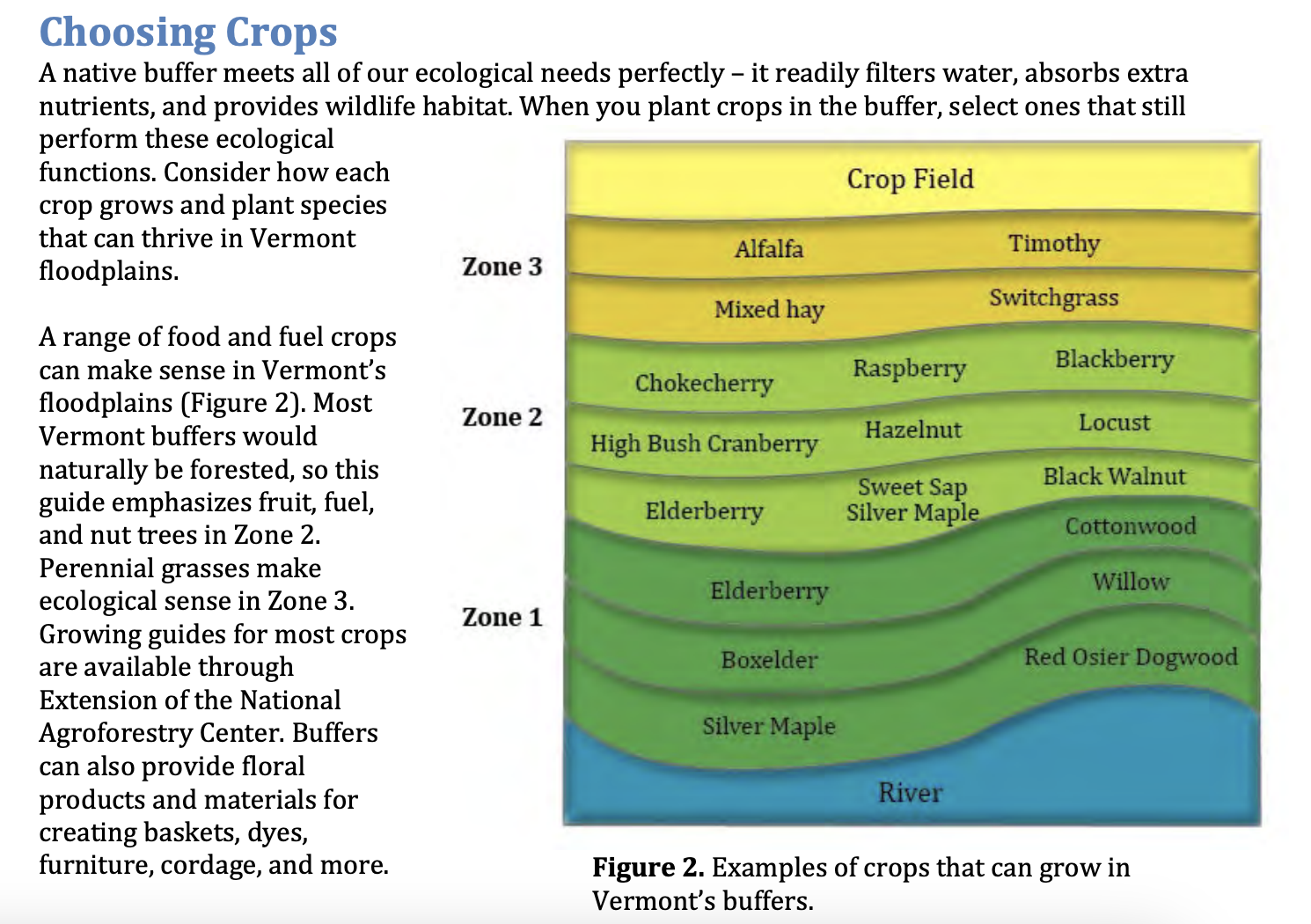Multifunctional Productive Buffers
We've added a new pilot program under Trees for Streams to promote the implementation of multifunctional productive buffers.
A multifunctional productive riparian buffer is a vegetated area alongside a stream that provides both ecological benefits and economic opportunities. The buffer cleans the water, holds stream banks in place, and provides wildlife habitat, while growing edible and profitable food crops. These buffers can be managed to produce marketable products such as sap production and nuts, berries, and other fruits, offering a potential source of income for landowners. Productive buffers can be a component of community farm system, an agroforestry practice, and provide food security and climate resiliency.
OCNRCD is presently seeking applicants for the Multifunctional Productive Buffer program (Fall 2025). To be considered for a Spring 2026 productive buffer planting project, interested landowners should contact OCNRCD for a site assessment.
TO INQUIRE ABOUT THE PROGRAM, please reach out to Ted Sedell, our Riparian Lands Program Manager (see side box for contact info), with questions or for an application.
Download our handout on Multifunctional Productive Buffers here:
Handout-TFS Productive Buffers.pdf
Program Overview
What we will provide:
- Professional design and installation of diverse, productive riparian buffers
- Minimum 35-foot width to maximize water quality benefits, with 50 feet providing even greater conservation impact
- High-density plantings (minimum 300+ stems/acre, with 400+ preferred for enhanced establishment)
- Species selected for both ecological function and productive potential
- Ongoing technical support during the critical first 1-3 years.
What Makes a Project Successful:
- Buffers designed to complement natural resource protection on high quality headwaters, creating resilient watersheds and communities, while maintaining strong cost effectiveness
- Sustainable harvesting practices that maintain the buffer's protective function guided by conservation priorities while supporting food producing and community resilience potential
- Partnership between landowners and NRCD through a signed 10-year landowner stewardship agreement
- Collaborative monitoring to ensure both conservation goals and productive potential are achieved.
Common Q&A's
How is the buffer designed and what species can I plant? Planting plans prioritize ecological function first. Plans include a diversity of at least 5 different native species and/or locally adapted alternatives where appropriate, high density (300+ stems per acre) that are generally 3ft+ bareroot, ideally purchased from tree nurseries in the Northeast and similar latitudes. Plan designs are also developed using local site information such as:
- Local soils, associated natural community types and multifunctional buffer principles
- Hydrology of the site, stream reach conditions, and location of surface waters top of bank
- Erosive features and concentrated flow paths
- Historic land uses
- Existing species compositions including weed pressures and site preparation needs
- Species adaptation to the climatic and carbon sequestration rates
- Landowner goals and interest including species that can be used for production
Who plants the trees? We work with landowners to engage local crews, like the NorthWoods Stewardship Center. Landowners can participate in planting, and we also organize volunteers.
What is required for the 10-year operation & maintenance agreement? Inspect the site at one-year intervals. Water and manage competing vegetation especially in the first two growing seasons. Maintain the health of the established plant community and protect from adverse impacts.
What if many of the trees die? We expect some mortality, as tree establishment success depends on many factors. If survivorship declines significantly, despite best efforts to follow the operation and maintenance agreement, we work with landowners to make an adaptive management plan, which may include replanting.
Can I plant a buffer with just productive species? Native nuts and/or fruits will produce over time, and are important in the diversity of species that can be appropriate for the site, but not the whole. Ecological diversity is essential for buffer function and resilience, and water quality and ecological restoration are the primary goals.
Can my livestock use the buffer for shade and silvopasture? No. Livestock access compromises water quality protection and can damage establishing vegetation. NRCDs can provide livestock fencing support.
How much does it cost the landowner? There is no cost requirement, though landowner contributions are welcomed and can help with project ranking. Premium productive species may require cost sharing to maintain program cost competitiveness for state funding.
Can I sell products from the buffer? Yes, once the buffer is established and functioning. Harvesting that doesn't disturb soil or compromise vegetation structure supports both conservation and economic goals.


